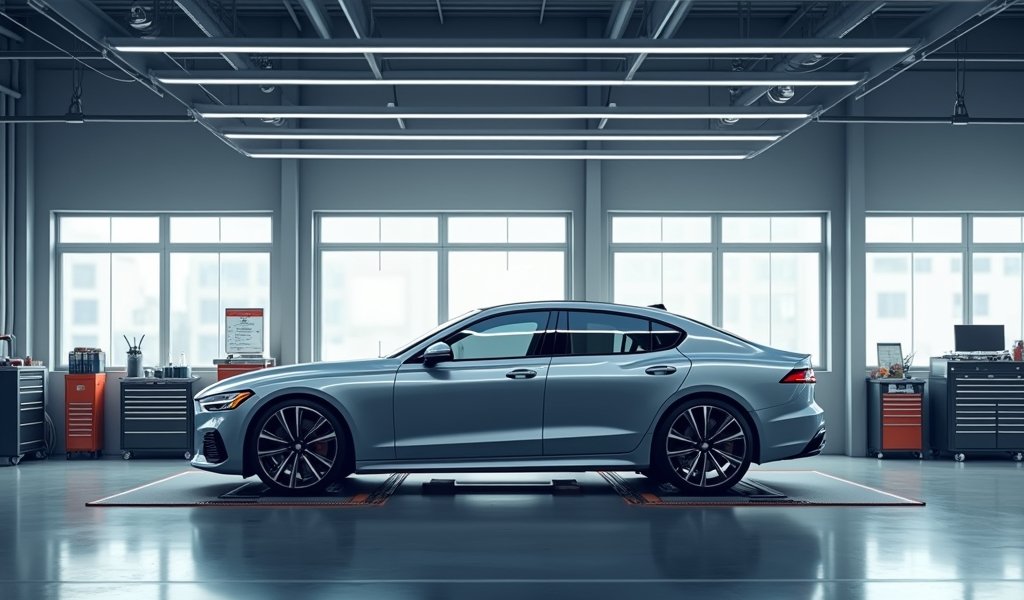Overview
Full coverage car insurance combines liability, collision, and comprehensive protection to safeguard both your vehicle and financial well-being beyond minimum requirements, though it has limitations such as not covering mechanical failures or wear and tear. When deciding on coverage, consider factors like your vehicle’s value, financial situation, and risk tolerance, while shopping around for quotes and understanding exactly what your policy includes.
Table of Contents
- Understanding Full Coverage Car Insurance
- Key Components of Full Coverage Car Insurance
- What Full Coverage Car Insurance Doesn’t Cover
- Who Needs Full Coverage Car Insurance?
- Cost Factors and Saving Tips
- Full Coverage vs. Minimum Coverage: What’s the Difference?
- How to Choose the Right Full Coverage Policy
- Conclusion
- Frequently Asked Questions
Understanding Full Coverage Car Insurance
When folks ask me about “full coverage car insurance meaning,” I often see the confusion in their eyes. Despite how common this term is at the shop, it’s one of the most misunderstood concepts in the automotive world.
Here’s the truth: “full coverage” isn’t actually an official insurance industry term. It’s just shorthand we use to describe a policy that combines multiple types of coverage. When I’m explaining car issues to customers at the garage, I find this is similar to how we use “tune-up” – it means different things to different people.
Typically, when insurance agents talk about full coverage, they’re referring to a policy that includes liability, comprehensive, and collision insurance bundled together. This combination provides substantially more protection than just the bare minimum, but – and this is important – it doesn’t cover absolutely everything, despite what the name suggests.
Think of it like the difference between basic maintenance and preventative care for your vehicle. One keeps you legal on the road, the other helps protect your investment when the unexpected happens.

Key Components of Full Coverage Car Insurance
Liability Coverage
Liability coverage is the foundation of any auto insurance policy – it’s like the engine oil in your car, absolutely essential. Almost every state requires it by law, and it consists of two main parts:
- Bodily injury liability: Covers medical expenses for others if you’re at fault in an accident
- Property damage liability: Pays for damage you cause to someone else’s property
This coverage protects your finances when you’re responsible for an accident, but it doesn’t cover your own vehicle or injuries – similar to how a basic oil change keeps your engine running but doesn’t fix a broken transmission.
Comprehensive Coverage
Comprehensive insurance covers damage to your vehicle from incidents other than collisions. As a mechanic, I see this as protection against all those things you can’t control:
- Theft
- Vandalism
- Fire
- Natural disasters (floods, hurricanes, hail)
- Falling objects
- Animal collisions
If your car gets stolen or a tree falls on it during a storm, comprehensive coverage would help pay for repairs or replacement. It’s the protection for those “I never thought that would happen” moments.
Collision Coverage
Collision insurance covers damage to your vehicle when it collides with another vehicle or object, regardless of who’s at fault. This includes:
- Accidents with other vehicles
- Single-car accidents (like hitting a guardrail)
- Rollovers
This coverage ensures your car gets repaired even if you cause the accident. In my years fixing vehicles, I’ve seen countless customers relieved they had this coverage after a fender bender.
Additional Coverages Often Included
While not always part of standard “full coverage” packages, these additional protections might be bundled in or available as add-ons:
- Personal injury protection (PIP): Covers medical expenses for you and your passengers
- Uninsured/underinsured motorist coverage: Protects you if someone hits you but doesn’t have enough (or any) insurance
- Medical payments coverage: Helps with medical bills regardless of fault
- Rental car reimbursement: Covers rental car costs while your vehicle is being repaired
- Roadside assistance: Provides help for breakdowns, lockouts, and other emergencies
What Full Coverage Car Insurance Doesn’t Cover
Despite its name, “full coverage” isn’t truly comprehensive. As someone who works on cars daily, I can tell you there are significant gaps you should know about:
- Mechanical breakdowns: Just like our extended car warranties cover, insurance generally doesn’t pay for mechanical failures or routine maintenance. Your transmission fails? That’s not covered by insurance.
- Normal wear and tear: The gradual deterioration of parts over time isn’t covered. Those worn brake pads or aging belts are your responsibility.
- Custom equipment: That aftermarket stereo system or fancy wheels you installed might require additional coverage.
- Personal belongings: Items stolen from your car usually fall under homeowners or renters insurance, not auto insurance.
- Exceeding coverage limits: If damages exceed your policy limits, you’re responsible for the difference – similar to how a warranty might have mileage limitations.
Many drivers believe “full coverage” means they’re protected against all possible scenarios, which can lead to costly surprises. I’ve had to break the news to customers that their insurance won’t cover a failed engine or transmission, and it’s never a fun conversation.
According to the Insurance Information Institute, these coverage gaps are why many vehicle owners complement their insurance with mechanical breakdown protection or extended warranties.
Who Needs Full Coverage Car Insurance?
From my experience helping customers navigate both repairs and insurance claims, here’s who should seriously consider full coverage:
Required Scenarios
Full coverage is typically required when:
- You’re financing or leasing a vehicle (lenders require it to protect their investment)
- You have a newer, valuable vehicle
- You lack the financial resources to repair or replace your car out-of-pocket
When It Makes Financial Sense
Consider full coverage if:
- Your vehicle is less than 10 years old
- Your car’s value exceeds $3,000-$4,000
- You regularly drive in high-traffic areas or have a longer commute
- You live in an area prone to natural disasters or high theft rates
I had a customer with a 7-year-old sedan worth about $8,000 who thought he was “saving” by dropping to liability-only. Six months later, he was in my shop with hail damage that would have been covered under comprehensive. That “savings” ended up costing him $4,200 out-of-pocket.
When to Consider Dropping Some Coverage
You might consider reducing to liability-only coverage when:
- Your car’s value has depreciated significantly
- The annual cost of comprehensive and collision coverage exceeds 10% of your car’s value
- You have substantial savings to replace your vehicle if necessary
One rule of thumb I share with my customers: when comprehensive and collision premiums cost more than 10% of your car’s value annually, it might be time to reconsider. For example, if your car is worth $5,000 and those coverages cost $500+ per year, the math starts working against you.

Cost Factors and Saving Tips
Full coverage typically costs 2-3 times more than minimum liability coverage. According to National Association of Insurance Commissioners data, the national average for full coverage is approximately $1,500-$1,700 annually, though prices vary widely by location and individual factors.
Factors Affecting Your Premium
Just like diagnosing a car problem requires looking at multiple systems, insurance companies evaluate several factors when determining your premium:
- Driving history and record
- Age and gender
- Location and ZIP code
- Vehicle make, model, and age
- Credit score (in most states)
- Annual mileage
- Deductible amount
- Coverage limits
- Prior insurance history
Ways to Lower Your Full Coverage Costs
Here are some insider tips to keep your premiums more affordable without sacrificing protection:
- Bundle policies: Combine auto with home or renters insurance for multi-policy discounts
- Increase deductibles: Higher deductibles mean lower premiums – just make sure you could afford to pay that deductible if needed
- Maintain good credit: Many insurers use credit-based insurance scores, so good credit often means better rates
- Drive safely: Avoid accidents and traffic violations – they’ll follow you for years on your insurance record
- Ask about discounts: Many companies offer discounts for good students, military, professional groups, safety features, and more
- Compare quotes: Different insurers may offer significantly different rates for the same coverage – I’ve seen variations of $700+ between companies
One of my regular customers saved nearly $400 annually just by increasing his deductible from $250 to $500 and bundling his auto policy with his homeowners insurance. Small changes can add up to significant savings.
Full Coverage vs. Minimum Coverage: What’s the Difference?
Let me break down the key differences in plain terms, just like I would for a customer in my shop:
Coverage Comparison
Minimum Coverage:
- Only includes state-required liability insurance
- No protection for your own vehicle
- Lower coverage limits (often insufficient for serious accidents)
Full Coverage:
- Includes liability, comprehensive, and collision
- Protects both others and your own vehicle
- Higher coverage limits
Cost vs. Protection
The difference becomes clear when accidents happen. Let me give you a real-world scenario I’ve seen play out dozens of times:
Scenario: You hit a deer, causing $4,800 in damage to your front end.
- With minimum coverage: You pay all $4,800 out-of-pocket
- With full coverage: You pay only your deductible (typically $500-$1,000)
Now, is the extra premium worth it? That’s where the calculations come in. If full coverage costs you an extra $600 per year, it would take about 6-8 years to equal the cost of that single deer collision repair. For many drivers, especially those with newer vehicles, that math works in favor of full coverage.
I’ve seen customers who thought they were saving money with minimum coverage until they needed to pay thousands out-of-pocket for repairs that would have been covered. In many cases, the “savings” from minimum coverage are quickly wiped out by a single accident.
Remember, insurance is about risk management – you’re protecting against financial disasters, not just minor fender benders. Think of insurance as an investment in your financial security, not just an expense.
How to Choose the Right Full Coverage Policy
Determine Appropriate Coverage Limits
Just like I wouldn’t recommend the same maintenance schedule for every vehicle, there’s no one-size-fits-all approach to coverage limits:
- Liability limits: Consider your assets and what you could lose in a lawsuit. The state minimum is rarely enough protection.
- Deductible amount: Choose based on what you can comfortably afford to pay out-of-pocket in an emergency.
- Vehicle value: Insure your car according to its actual cash value – insurance won’t pay more than the car is worth.
Shopping Tips from a Pro
After years of helping customers navigate insurance claims, here’s my advice:
- Compare at least three quotes: Rates can vary by hundreds or even thousands between companies for identical coverage.
- Check company ratings: Review customer satisfaction scores and financial stability ratings from independent sources.
- Look beyond price: Consider claims handling reputation, customer service quality, and digital tools.
- Review policy details: Don’t assume all “full coverage” policies are identical – read the fine print.
Questions to Ask Your Insurance Agent
Be as thorough with your insurance agent as you would be with your mechanic. Ask:
- “What exactly is covered in this policy?”
- “What are the policy exclusions and limitations?”
- “How will my rates change if I file a claim?”
- “Are there additional discounts I qualify for?”
- “How does the claims process work?”
One customer who followed this advice discovered her policy had a little-known discount for vehicles with advanced safety features, saving her nearly $200 annually. Those small details matter!
Conclusion
Understanding full coverage car insurance meaning is a lot like understanding your vehicle – the more you know, the better decisions you’ll make. While “full coverage” provides significantly more protection than minimum liability, it’s important to recognize it still has limitations and isn’t truly “full” coverage against everything.
The right policy strikes a balance between comprehensive protection and reasonable costs, tailored to your specific situation. Just as I recommend different maintenance schedules for different vehicles and driving habits, your insurance needs will depend on your car’s value, your financial situation, and your risk tolerance.
Take time to review your current coverage regularly, especially as your vehicle ages or your life circumstances change. And remember – while good insurance protects against accidents and certain damages, it typically won’t cover mechanical failures. That’s why many vehicle owners complement their insurance with extended warranty protection for complete peace of mind.
The few minutes you spend understanding and optimizing your coverage today could save you thousands tomorrow. Your future self will thank you when the unexpected happens – and in my decades working with vehicles, I can promise you that the unexpected always happens eventually.
Frequently Asked Questions
What exactly does “full coverage” car insurance include?
Full coverage typically includes liability, comprehensive, and collision insurance bundled together. It’s not an official insurance term but rather shorthand for a policy that provides broader protection than just liability coverage.
Is full coverage car insurance required by law?
No, full coverage isn’t legally required in any state, only liability insurance is mandatory. However, if you’re financing or leasing a vehicle, your lender will typically require full coverage to protect their investment.
Is full coverage worth it for older cars?
Generally, full coverage may not be cost-effective if your car is worth less than 10 times your annual premium for comprehensive and collision coverage. For a car valued under $5,000, paying $500+ annually for those coverages might not make financial sense.
Does full coverage protect against mechanical failures?
No, full coverage insurance doesn’t cover mechanical breakdowns, engine failures, or normal wear and tear. For these issues, you’d need a separate extended warranty or mechanical breakdown insurance.
How can I find the best deal on full coverage insurance?
Compare quotes from at least three different insurers, ask about available discounts, consider bundling policies, and choose appropriate deductibles. Companies can charge vastly different amounts for identical coverage, so shopping around is essential.

